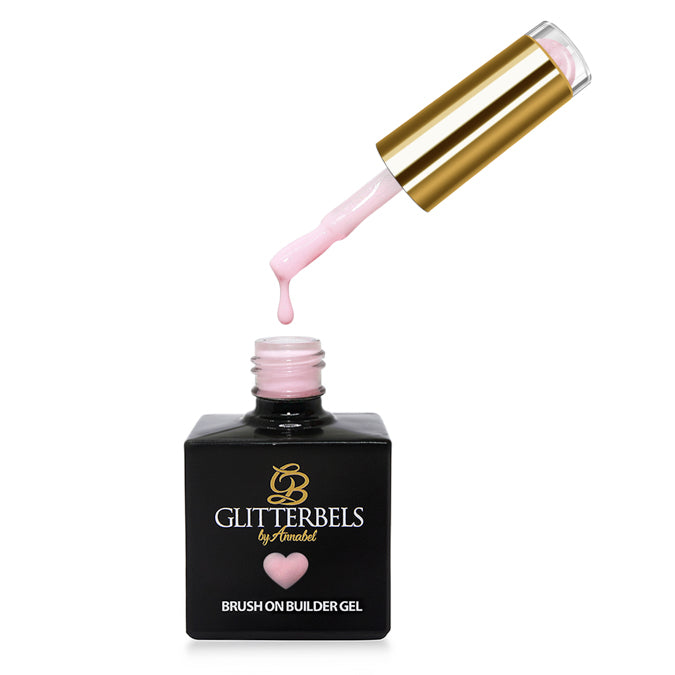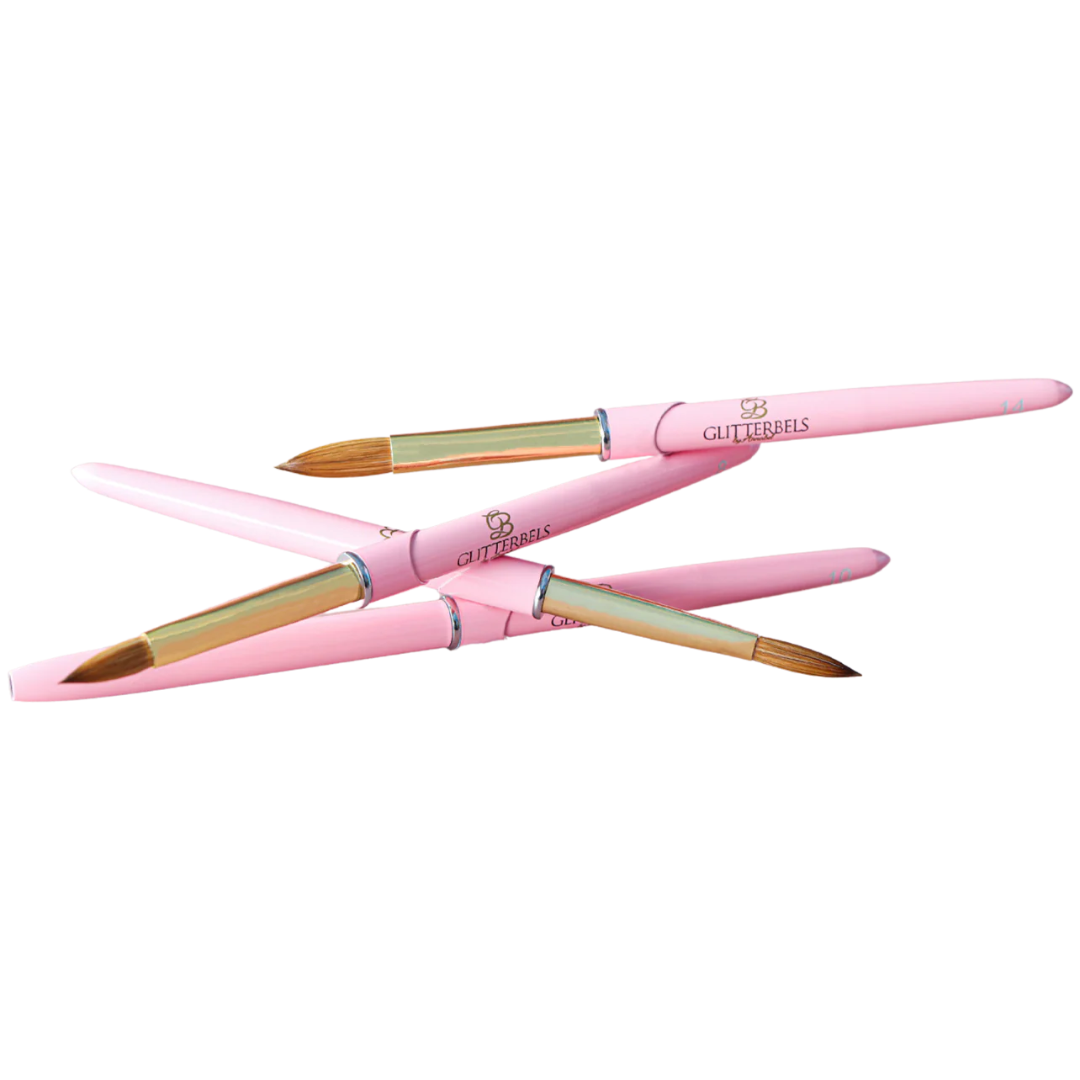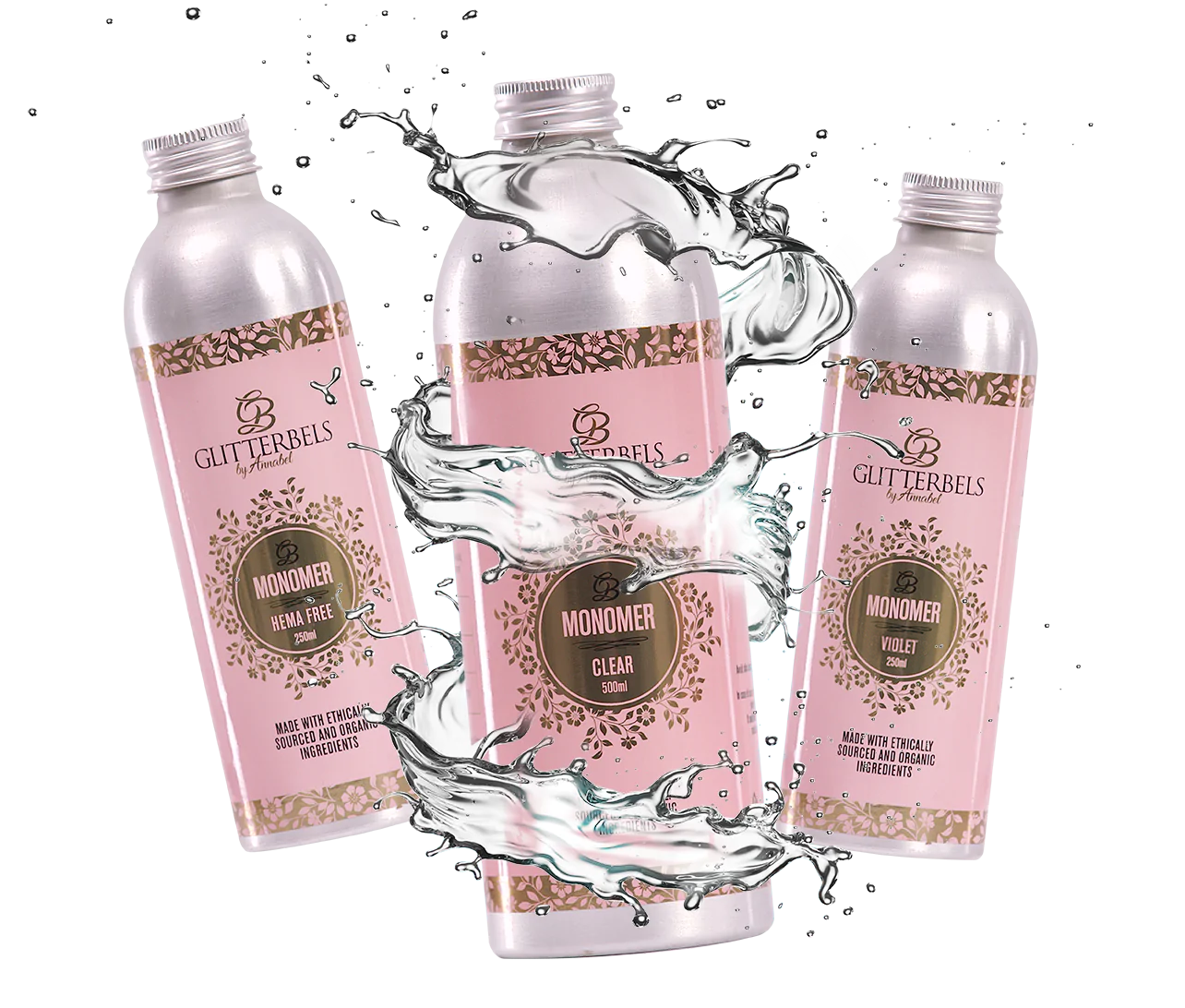Curing gel polish is not easy and requires some intensive training to master it. But it doesn't have to be a daunting task. With the correct technique and patience, you can learn to cure your gel polishes perfectly every time. Before starting the actual curing process, however, it's essential to understand what gel polish is and why it needs to be cured in the first place. Gel Polish is a type of nail polish that is cured with a special UV or LED lamp. So if you want to know how to cure gel nails like a pro, keep reading...
What is gel polish curing?
Gel polish curing is the process of using a specially designed UV or LED light to seal and harden the gel nail polish on your nails. This process is known as polymerisation because it causes the molecules in the gel polish to bond together, forming a solid layer of colour that won't chip or wear off easily. Depending on your nail type and the type of lamp used, curing times can vary from a few seconds to several minutes. We'll discuss this in greater detail below where we show two methods for drying gel nail polish.
Do you have to use a lamp to cure gel polish?
Yes, using a lamp is essential to cure gel nail polish. Without it, the molecules in the gel won't be able to bond together correctly, and your manicure will remain soft and susceptible to damage. While some brands of gel polish don't require a UV or LED light to cure, most professional technicians agree that using a lamp is the best option for ensuring a long-lasting, chip-resistant manicure.
Which is better for curing gel polish: UV or LED?
UV and LED lamps are an effective way to cure gel nail polish, so it comes down to personal preference. Generally speaking, LED lamps cure faster than UV lamps and don't produce as much heat, which can benefit people with sensitive skin or nails. On the other hand, some technicians prefer UV lamps because they offer more power and often provide a wider working area. Ultimately, the choice is up to you and what works best for your particular needs.
How to cure gel polish with an LED Lamp - Method
Step 1.
Opt for an LED lamp over a UV one and experience the benefits of faster drying time. LED lamps usually dry gel polish in half the time, ultimately saving you more time on your manicure. Although LED lamps can be pricier than UV lamps, investing in them could be a wise decision if you're seeking to save time.
Step 2.
To get your LED nail lamp running, start by selecting one with a power rating of at least 36 watts. Place the product on an accessible surface close to where you plan to paint your nails, and plug it into any nearby electrical socket.
Step 3.
With your freshly painted nails, position them directly underneath the LED lamp. Ensure one hand is covered with a single coat of nail polish designed for this kind of lighting. Once in place, ensure the shine from the lacquer faces upwards to receive maximum illumination benefits and long-lasting results.
To ensure a pristine manicure, keep your hands flat on the table or base of the lamp and separate your fingers. Be cautious not to touch any other parts of the lamp; this could ruin your polish. Opt for a removable-base type of lamp when picking out one specifically for a pedicure—it will make it more convenient for you to place over your nails as needed.
Step 4.
To set the polish, select a 30-second cycle. Using one hand to hold the lamp in place, use your other hand to adjust the settings and turn on a 30-second timer with either a dial or a designated button. Once you press start and see lights come on, ensure that your hands remain motionless beneath the light's beam for all thirty seconds.
When curing your gel polish, ensure you read the manufacturer's directions and know how long a cycle is required; some may only need 10 seconds, while others could take up to 45. If you have a lamp with just one button, press it for shorter cycles or hold it down for longer ones. Additionally, check the instructions from your lamp's producer so you can confidently use their product correctly.
Step 5.
As soon as the light turns off, you'll know your cycle is finished, and it's time to remove your hands from underneath the lamp. It's then safe to begin adding coats of gel nail polish. Remember to cure each coat under the lamp - including the base and top coats - so they can all be adequately sealed for long-lasting results.
Step 6.
To attain a flawless, glossy manicure finish, it's ideal to paint and cure one hand at a time. Begin by using the nail lamp on one hand before using the same hand to apply polish on the other. For best results, brush gel polish in thin layers until you reach an opaque colouration--usually, between 2-4 coats will do.
To prevent smearing or ruining your gel polish, paint and cure each finger separately, starting with the index finger. This way, you won't have to fret about messing up your other nails when using the less-dominant hand. Doing this will also allow for greater light exposure on the thumbnail so that it can properly dry faster.
Step 7.
You'll want to use an acetone-soaked cotton pad or paper towel to get rid of the tacky residue from your cured gel manicure. Glide it across each polished nail with a gentle motion to remove all traces of stickiness and leave behind perfectly clean nails! Once done, you can revel in your vibrant, glossy, freshly painted nails.
After the completion of a layer of gel topcoat, this step should be done to ensure success. Unnecessary steps are not required in between layers of gel polish for optimal results.
How to cure gel polish with a UV lamp - Method
Step 1.
Safety first: Protect your skin by wearing sunscreen or UV-absorbent gloves. As an added precaution, apply a broad-spectrum sunscreen to the hands before painting nails with gel polish. You could use UV absorbent gloves to further protect against harmful ultraviolet rays.
The Food and Drug Administration in the USA has deemed the adverse effects of UV lamps low-risk with proper usage. However, to ensure your well-being, it is wise to take extra safety measures when exposing yourself under their lights. Moreover, abstain from applying any cosmetic products on your skin before getting a session since they can cause hypersensitivity reactions to UV rays.
Step 2.
Find a convenient electrical outlet and plug in your 36-watt UV nail lamp. Place the lamp on the table where you'll be painting your nails before starting. After that, attach the power cord to your chosen electrical outlet, and you're ready to go.
Step 3.
Place your painted nails flat under the UV lamp, allowing for a slight gap between each finger. Position them so that the polish-side of your nails face upwards, and keep your palms pressed on the table or against the lamp's base. You don't need to stick all five fingers into one section - make sure that only your fingernails are getting direct exposure from beneath this radiation source while mitigating any further skin contact with UV light.
Step 4.
For a flawless finish, set your timer for two minutes and press the power button to turn on the lamp. Keep still while it dries – this is essential in achieving that perfect shine.
Before you begin with the gel polish, read through and follow all instructions from the polish manufacturer. Depending on the product used, it might only take a one-minute cycle. After every gel layer has been applied, curing each completely is necessary before continuing. To remain safe during this process, don't run your UV lamp for more than 10 minutes when working on both hands - this equals up to five layers of colour or base coat/topcoat combined.
Step 5.
To ensure a perfect manicure, paint and cure each hand individually. This will allow you to avoid smudging your gel polish while also granting added convenience when applying the colour to your dominant hand, as it will be dry by then. Additionally, put thick layers of thin coats in order to create an even finish that looks professional. Finally, if advised by the manufacturer or for extra precaution against smudges - make sure you paint and dry your thumbnails separately.
Step 6.
To complete the removal process, take a cotton pad saturated in alcohol and remove the sticky top layer that has been produced from your cured nails. If you prefer avoiding alcohol-based products, use a specialised gel cleanser instead. After this step is completed, you can enjoy flawless nails.
Step 7.
For intense daily use, your UV bulb should be replaced every 2-4 months to ensure consistency in effectiveness. Make sure to purchase a new set of bulbs from the same manufacturer and follow the instructions for installation. If you are not using the lamp consistently, replacement only needs to occur once or twice per year.
How long should you cure the base gel polish coat?
This unique trait allows the gel base coat to bond tightly with your nails, lasting up to two weeks. However, if you over-cure this layer of polish, its stickiness decreases and becomes brittle. Even worse is that the hard surface won't be affected by acetone when you try removing the product from your nails.
To avoid over-curing your gel base coat, only expose it to the LED lamp for 45 seconds. Even if this seems too brief, additional UV light will be emitted as the gel polish's top, and colour coats must also go through their specific curing processes afterwards. Ultimately, even without going beyond that initial forty-five-second mark -the entire process can extend 3 minutes or more after all is said and done; over-curing is a real risk in these cases.
What about the gel polish colour - how long should this be cured?
The defining characteristic of gel polish is its flexibility, which must be preserved with adequate curing. When the pigment is over-cured, it loses this crucial quality and results in colour adhering directly to the nail plate during removal rather than peeling away from the base coat as though there never was one. So while you won't immediately notice an issue, take care not to let your gel polish get overcooked.
When this happens, you will struggle to remove over-cured gel polish with acetone, and it won't work. To prevent damaging your natural nails, reach for a nail file or electric file instead, and a gentle filing will easily take it off without causing any harm.
What about the top coat? How long should this be cured?
When it comes to gel polish topcoats, you should only cure them for a maximum of 90 seconds - even if you feel that 60 seconds may not be sufficient. This protective sealer preserves the colour underneath while giving your nails a luminous finish.
Excessive curing of the gel top coat can cause it to become hard and solid, rendering it unable to interact with acetone. This means that if your topcoat is over-cured, you will need to manually file off the product in order for removal.
Why is my gel polish not drying?
The most common reason your gel polish is not drying correctly is that the UV lamp was insufficient. The LED lamp bulb must be powerful enough to emit UV light at the correct frequency, so do not use a cheap knock-off that cannot produce this wavelength. Moreover, these lamps must be placed far enough away from your nails - usually around 2 inches - for the gel base coat and top coat to form correctly.
Do you have to cure regular nail polish?
No. You can air-dry regular nail polish.
So there you have it, our ultimate guide to curing gel polish. In summary, our top takes would be to keep the gel base coat exposed to the lamp only for 45 seconds, cure the colour layer for 60 seconds and do not exceed 90 seconds for the topcoat. If you follow this advice - your nails will look fabulous and last longer. If you are keen to further your skills or are a complete novice, feel free to head over and check out our online and in-person courses here.

















